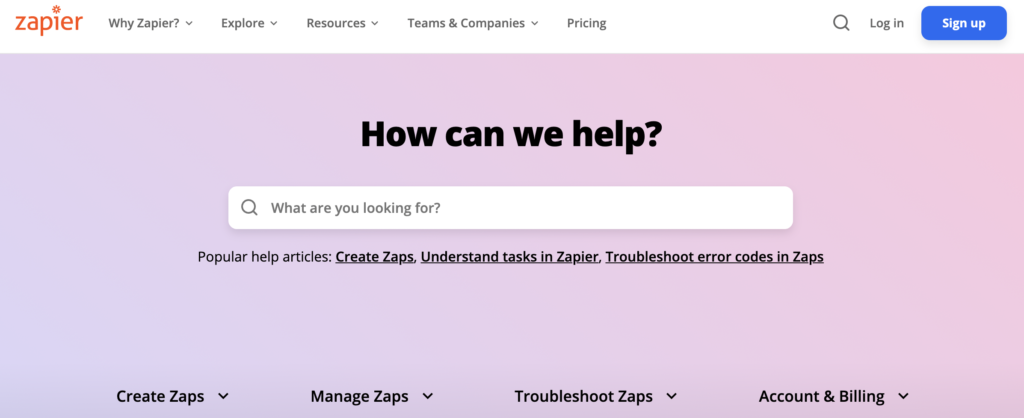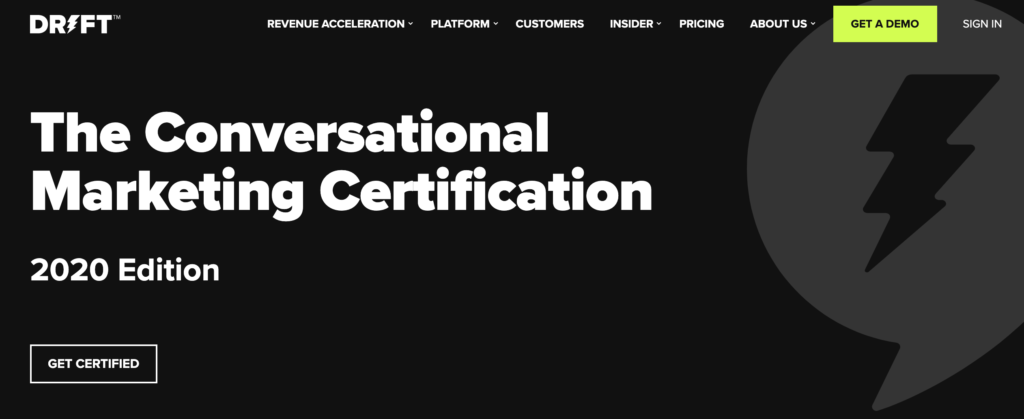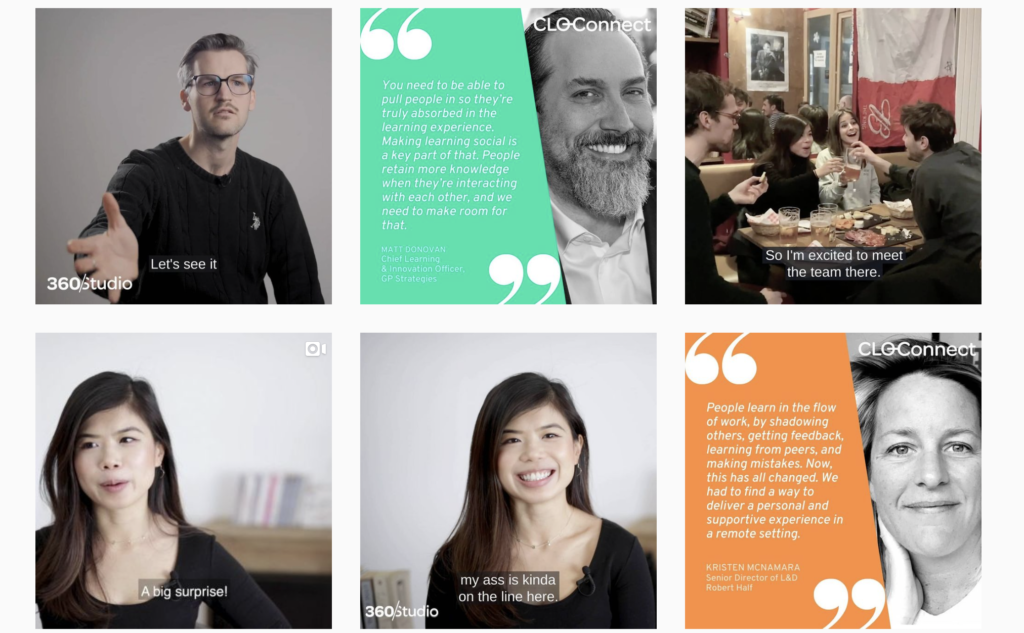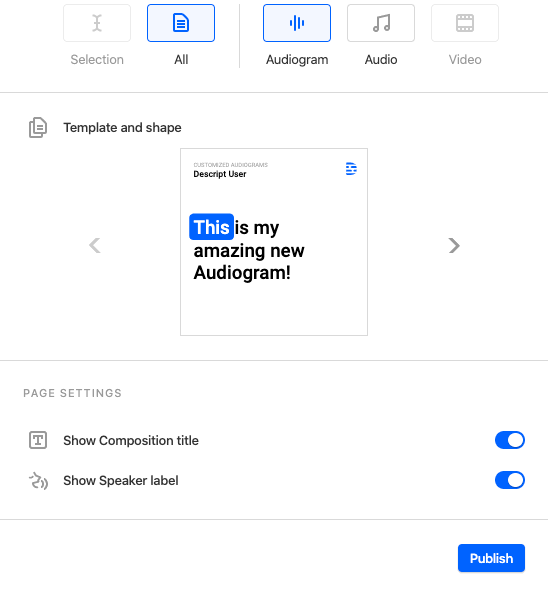Different Types of Content to Consider for SaaS Marketing
28th March 2021
I love creating content marketing strategies for SaaS companies. Why? Because the audiences of SaaS companies are incredibly receptive and actually looking for content to read and consume. That already makes our job as marketers so much easier.
SaaS really means “product” and, when you’re selling a product, there is often a learning curve that means education is needed to help the customer understand what they’re buying. This is different from other sectors, where marketing means you only have a service or brand to work with and you have to use this to sell to customers, which can come across as sales-y.
SaaS content marketing, on the other hand, relies heavily on education, packaged up into blogs, landing pages, ebooks, webinars, videos… the list goes on. As content marketers, it’s our job to create a content strategy to work out what content the audience needs, and at what point, to then create it for them.
However, I see many SaaS companies struggling to know what to create in their marketing plans, and what to prioritise. In this article I will take you through the different types of content to consider for your SaaS company and at which point in the customer journey you’ll probably need them.
Different types of content for SaaS marketing
1. SEO content
Many SaaS companies begin their marketing strategy with an SEO strategy, and this is a solid move. SEO takes time to build, so starting early can help you to bank content which will later begin to generate leads while you move onto other forms of marketing.
SEO content tends to live on your website, either through landing pages or blogs, and can be implemented without the need of a full marketing team. This type of content is usually aimed at generating leads and sales, speaking to users before they become customers, and trying to raise engagement and interest with your product and company.
2. Product education content
Product education usually becomes formed through a “Help Centre”, also known as a “Knowledge Base”. This is usually segmented for users from the point of trial right through to when they become customers. Implementing a help centre usually requires a third-party SaaS tool such as HelpScout, Zendesk or Groove HQ. In fact, there are a ton of choices available for the type of content management system you can use for your help centre.
Help centres usually begin as a few basic guides and grow over time until they become sprawling masses of content. At this point, you’ll want to have some sort of structure to your help centre, almost like a mini website navigation in itself (Zapier’s help centre is a good example of this in action).

Help Centres tend to rely heavily on a deep search function to surface the right information to users. If you think about how we search for information, users may not know the technical names, only what they want to achieve, so it’s important to think about intent when writing your Help Centre articles to ensure they’re easy to find.
As you become more established, you could also consider extending your knowledge base into a form of accreditation or training course that customers can take to become a deep specialist in your key area. Companies such as Drift are great examples of product leaders who have built accreditations which not only help customers to learn, but which also work as a kind of referral marketing to raise even more awareness of the business.

3. Co-marketing content
Particularly in the early stages of SaaS marketing, co-marketing is a great way to increase discoverability and build awareness for your brand. Co-marketing can be executed with partner products that integrate with your product (think apps or integrations), or with complimentary companies within your industry.
An example may be if you’re a website content management system like Webflow, bought predominantly by marketing teams. Perhaps you could create a co-marketing opportunity with an SEO tool, also bought by marketers. Your audience profiles are similar but you are complementary companies, rather than competing, so co-marketing can work well.
Co-marketing is more of a marketing practice than a form of content, as it can be executed in a variety of ways using different types of content. This might be a joint webinar, where you market this to both audience groups respectively, or it might be a guest post on each other’s blogs, which also helps to build backlinks an SEO bonus!
4. Sales enablement materials
Ebooks and whitepapers (effectively the same thing) are another form of content marketing, usually implemented early within SaaS marketing for sales enablement.
Ebooks can be used to capture leads at the top of the funnel, for customers who may not be ready to convert but who you want to stay front of mind for.
They can also be used for product education, helping to educate users throughout their journey up to the point where they’re ready to buy. This is a particularly good practice for SaaS companies with longer sales cycles.
They can also be created as part of a sales process for Enteprise customers using more detailed customization where each customer receives a custom version, although this can become time-consuming without the right processes in place.
With ebooks you need the content, design to make the reading experience enjoyable and usually some form of website integration to allow you to set up the download capabilities if you want customers to self-serve.
For early stage companies who may not have a system like Hubspot implemented, I’d recommend using something similar to Get Site Control to host downloads on specific pages.
5. Lifecycle customer content
Lifecycle customer content tends to tie in closely to whitebooks and ebooks. This is because, after you’ve captured someone’s email, you’ll want to decide what else you can send them to keep interest and further educate them on your product offering.
This may be a series of emails that go out after the initial download (just ensure you have permission to do this #GDPR), an offer of a trial or further materials, such as ebooks and webinar invitations.
These are also often called nurture campaigns, as the idea is to continue nurturing your lead until it becomes a customer (or disengages).
You can also create lifecycle marketing campaigns that run for lost leads and ex-customers. For example, you could send a campaign three months after a lead was lost to offer another trial, or to ex-customers with some useful materials or a special offer. Try to be considered in your approach to lifecycle marketing, as too many emails are more likely to cast a negative opinion of your company.
6. Newsletters and email marketing
Email marketing seems to have dropped in priority level for many marketers over the past few years, but I still see this as a core component of SaaS marketing.
Here, segmentation is key. For leads and those who have only had light touch with your company, I would always recommend sending an email newsletter which provides value – and isn’t just a sales or product push.
This is where editorial content comes in handy. Writing blog posts that either educate or inspire your audience (think lessons on how to do something new, or interesting theories/learnings from your company) are great forms of content that can be sent out via newsletter.
My favourite examples of this are the newsletters from Buffer and Groove HQ, both SaaS tools, who share marketing tips and “behind the scenes” company growth tactics respectively, and mention their product sparingly.
For customers, I’d always recommend producing a regular newsletter as a vehicle to keep customers retained by sharing new product updates, features and can also share company insights that will help to build deeper brand affinity.
7. Social media
Social media in SaaS is still an area I don’t think companies have quite figured out yet, myself included! It’s worth creating a social media presence early on as this can be a form of social proof that your company is legitimate, but I’m not 100% convinced that social can be a strong form of lead generation.
Instead, I see social media in SaaS more as a customer service channel (where do we all turn when Slack goes down? Twitter of course!) or as a way of building brand awareness. Pushing your product on social rarely goes down well – when you’re only using organic social media, gaining reach and engagement can be hard.
Saying that, the right paid social media strategy could help you to generate leads from channels such as LinkedIn and Twitter, if that’s where your customers are hanging out. I also see many SaaS companies using channels such as Instagram to go behind the scenes, which can be a good way to build your employer brand and hire the best talent. 360Learning is one SaaS company I enjoy following on Instagram, because of how much of their content is about the challenges their teams face, rather than just a product push.

8. Webinars and events
Webinars and events are a great form of content marketing, especially if you want to market in a one-to-many format. This is useful if you have low sales volume, and/or your product is relatively self-serve, meaning that you can teach customers how to use it and then leave them to their own devices.
Webinars generally need a bit of infrastructure to get going in the form of slides and content, a webinar hosting tool (or you can use Zoom for this) and an interactive feature for users to ask questions and engage with the topic.
Some SaaS companies will create pre-recorded webinars, which can work well for different timezones, but in my experience engagement is far higher with live webinars when there is some Q&A capability.
You could also use social media tools such as Instagram and Facebook Live to run live events if your customers are open to using these types of platforms.
9. Video and audio content
Video content is often bought in late in SaaS marketing because the cost to creation is slightly higher. However, there are so many consumer tools you can now use to create video content that there really is no excuse for not creating a tier one video strategy, even in your company’s early stages.
If you don’t have any formal video editing experience (like me!) then tools such as Descript, Loom and Vimeo Create are great for creating short-form videos to aid the rest of your content. Video types I’d be considering in early-stage marketing plans would be:
- Help centre tutorial videos
- YouTube “how to” videos
- Quick demo recordings to send to customers
- GIFs
- Promotional videos for interviews or podcasts
Audio marketing is also seeing a definite rise in SaaS marketing, particularly in the form of creating a podcast. Podcast content can then also be repurposed by transcribing the material into blog posts, creating audiograms for use across social media (Descript is great for this) and for sending out as a part of your newsletter.

Podcasts are really valuable in my opinion, as they can help customers or potential employees to spend up to 40 minutes to an hour with your brand at a time! This is near-on impossible to achieve through other content forms. However, podcasts which are created solely as product promotion will almost always bomb. If you’re asking your customers to listen to something you’ve created, ensure the editorial thought has been given to make it worth their while.
10. PR
PR is usually thought about at the start of a SaaS company during launch, and then again when the company is very established. This may be because it’s notoriously difficult and can be expensive to implement. That said, there are many types of content activity I’d deem to be a worthy part of PR that you can start early.
Your product launch is a great time to plan for some PR activity. But remember, just because this is very exciting for you doesn’t always mean it’s as exciting for everyone else. Unless you have a hook (youngest CEO, first in the market, a true disruptor) then there really is little point creating and distributing a press release. A better use of effort would be building an early interest or beta list and hosting a virtual event for customers, investors and your team.
Another good PR practice to raise awareness of Founders is finding interviews and podcasts they can take part in. This is a good way to build PR around your company and story.
Over to you…
As you can see content marketing is a huge area for SaaS and this is really just the tip of the iceberg. If you’d like some help working out your content strategy and where to start, feel free to get in touch and we can look at your best route to market.
